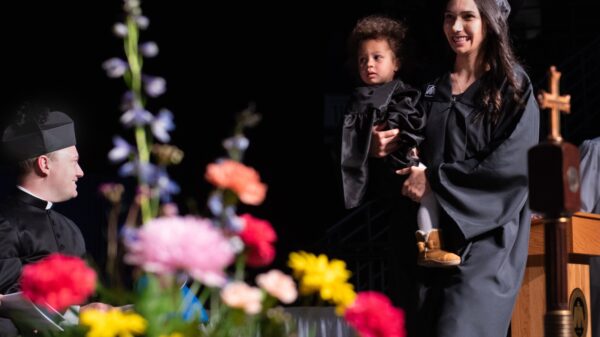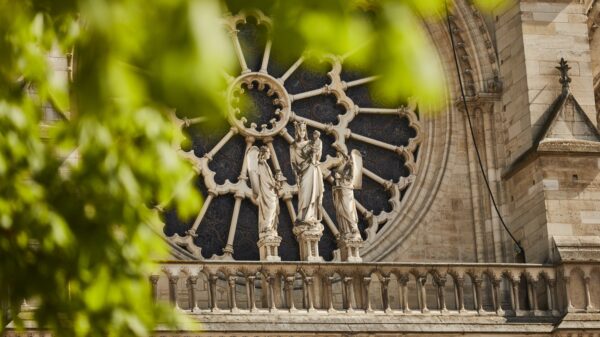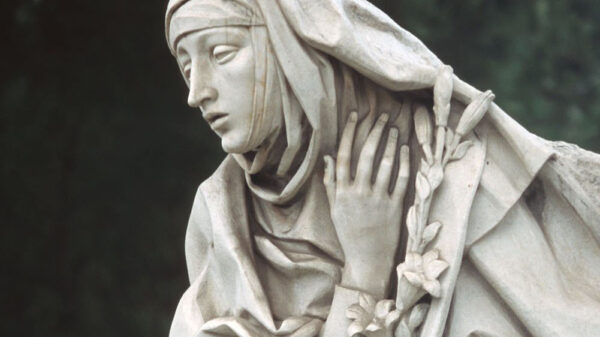How do you see the world? What is your core worldview? When you look at the world, is it exclusively a place of trouble, toil and tragedy, or is it a place of beauty, bounty and blessing?
Recently, I spent some time with family and found myself making it a mission to turn around all the complaints I heard (and there were plenty). If the weather was lousy, I would remark on how much the area needed rain, especially with all the wildfires. If traffic was bad, I expressed gratitude to God for a car, something not everyone has. If the barista who made the coffee just right wasn’t at the coffee shop (all the rest were less than competent), I would mention that such a good worker deserves their day off.
I’ve tried my best to develop not just a positive outlook, but a sacramental worldview, to see the world, people and situations through God’s eyes.
In its simplest form, a sacramental worldview means participation in the life of Christ — to be IN CHRIST. In baptism, we enter into the very life of God. Being in Christ, we work to develop the ability to see the world through his eyes. The world, then, can become a sign that points us toward our ultimate goal, which is eternity with God.
It’s not easy to see through God’s eyes. It’s much easier to complain than to look for God’s presence and action in the negative aspects of life.
Developing a sacramental worldview takes practice and the willingness to see things differently.
In his book “Mysterion,” Father Harrison Ayre describes three elements of a sacramental worldview.
The first is that God always works through creation. We don’t experience God directly. Even Elijah covered his face when he encountered God in that still, small voice up on the mountain (1 Kgs 19: 11-13). A sacramental worldview means that we begin seeing every situation and every person as the potential means through which God wants to share the divine life with us. Like the seven sacraments, which use physical things like water, oil, bread, and wine, to make something spiritual present and tangible to us, so too can God use anything this world has to make his invisible presence known. Even the Eucharist, which is as close as we’ll get to God on earth, works through creation in the form of bread, wine, and the consecrating words of the priest.
The second element of the sacramental worldview is having a spiritual vision of the world and seeing everything through the eyes of eternity. It’s putting on “God-colored glasses.” Everything can have a spiritual meaning if we only train our eyes to see it, to seek out manifestations of God all around us, including in the media we experience. Since God is Love, that means trying to see with love, even against our instincts.
The third element is that the sacramental worldview is centered around participation. One aspect of participation involves our response to God’s action. Being able to see God’s action in people and situations more clearly draws us out of ourselves to greater faith, which then, hopefully, leads greater participation in the life of Christ, including the life of the church.
When it comes to popular culture, engaging with movies, TV, video games and social media with a sacramental worldview means being attentive to their symbols and the meaning which can be gleaned from them. Symbols are powerful things. Take the “Golden Arches” for example. The McDonald’s logo is a symbol recognized the world over as quick and easy, on-the-go food. Depending on your situation, it could also symbolize tough times or health problems. Symbols can also evoke strong feelings in people contingent upon their experience or beliefs. Just think of a swastika or a rainbow flag.
The latest “Guardians of the Galaxy” movie (Volume 3) was rife with symbolism. Respect for all of creation, human and animal, gets conveyed through a “Noah’s Ark” moment in the film. There’s even a sequence that evokes Michelangelo “Creation of Adam” from the Sistine Chapel. No spoilers here, but this symbolic imagery represented a new creation for a character.
I don’t have the audacity to claim that I always see the world through sacramental eyes. I fall into negativity on occasion just like everyone else, and I tend to see the devil’s work more clearly than God’s. With practice, though, each day I try my best to recognize the symbols the world offers and have them point me to God rather than away. I do the hard work of developing the sacramental worldview that helps me to see all things and people, and, yes, even popular culture and entertainment media, through my God-colored glasses.
Sister Hosea Rupprecht, a Daughter of St. Paul, is the associate director of the Pauline Center for Media Studies.











































